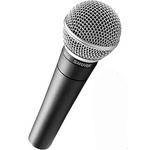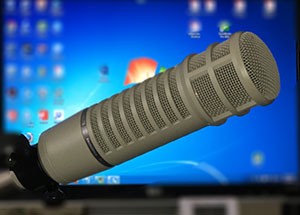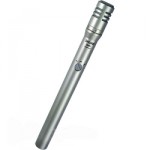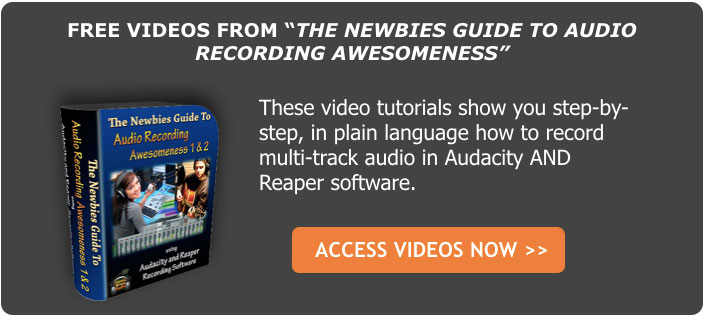Condenser vs Dynamic Microphone: What Is The Difference?
Condenser vs dynamic microphone? You’ve probably wondered what the difference was between them? Maybe you didn’t know there WAS a difference:).
You are not alone. Microphone technology is not that easy to understand.
To add to the confusion, the different types of mics usually have scary-sounding names like “large-diaphragm condenser,” and are often differentiated from each other by more strange and intimidating terms like “transformerless” or “field-effect transistor.” To heck with that! I just want to know what mic to use and how it will sound.
Welcome to the world of jargon. Computer geeks have their jargon and so do audio geeks. At the end of the day I think we’re stuck with some of these terms. But I’ll try to clue you in to the things you should know, and the general rules-of-thumb for use. That should give you a starting point at least, without having to earn a degree in electrical engineering (although if you have one of those, it can be VERY handy in understanding microphones).
There are two main styles of mic, the condenser, and the dynamic. Don’t worry about WHY they are called these things for now. Just remember that they are. All mics need to convert sound into electricity so it can be plugged into amplifiers and speakers and stuff. The main difference is how the mics do that conversion.
First – What Is Sound?
You’ll find it helpful to understand just what sound really is. That will make it easier to understand the difference between the types of microphones.
Sound/audio is the result of air molecules suddenly bouncing back and forth. When you hear something, it’s because that thing caused some movement in the air, which caused waves to start making the air molecules vibrate back and forth. Think about what happens when you drop a rock in a pond. The rock’s energy hits the water and causes an up-and-down motion that moves through the water. It’s basically the same thing with air.
When those “air waves” hit the microphone, the insides of the mic respond in a certain way. In dynamic mics, it causes a physical movement, sort of like what happens when waves move under a boat. The waves cause the boat to physically move up and down on the water.
In a condenser mic, there isn’t physical movement. The pressure of the waves hit the “diaphragm” and respond to the back and forth pressure of the waves.
Dynamic mics
These mics use a moving coil and a magnet to turn sound into the needed electrical signal. Like I mentioned above, sound waves cause a physical movement in the mic. In fact, dynamic mics are really just loud-speakers in reverse. You know that film that make up the cone of your woofers? The one you can see bouncing back and forth when music comes out of it? There’s a small, flat one of those attached to a spring (coil) inside a dynamic mic.
In the middle of the spring is a magnet. When you scream into the end of a dynamic mic on stage, it makes the spring bounce up and down. That bouncing results in changes in the magnetic field, which makes the spring feel all funny inside (something about how magnets can “induce” some sort of sickness in coils of metal nearby.
Some folks call it “induction,” but I think it’s just magic). Once the spring starts feeling odd, it sends out an electrical signal, kinda like “spring-puke.” And voila, an electrical signal that can be sent to an amplifier. Dynamic mics are rugged and can stand up to lots of loudness and abuse, which is why they are preferred for live performances. Also, they can be used in the studio for drums and electric guitar amps.
One example of a common dynamic mic is the Shure SM58 (see picture above)., as well as the Shure SM57. Another example of a dynamic mic is a higher-end type often used in the broadcast arena called the Electro-Voice RE20. that’s what I currently use in my studio both for voice over and for singing.
Condenser mics
These mics need an electrical charge in order to work. That charge usually comes from “phantom power” (yeah, I know…remember what I said about the terms) that is available from mixers or amplifiers.
Once it’s powered up, a condenser mic uses a bunch of EE (electrical engineering) formulas to turn the changing distance between two “plates” (“sound” makes one of the plates move back-and-forth) into the needed electrical signal. Condensers are more sensitive and quieter (and usually more expensive) than dynamic mics. They are typically used in the studio as opposed to the stage.
Because of the differences in how the mics are made, dynamic mics do not need phantom power.
Large Diaphragm Condensers (LDC)
The big ones – where you speak into the side instead of the end (called large diaphragm condensers, oddly enough:-P) – are great for vocals and sometimes acoustic guitar (obviously other things too, but those are the biggies). The large diaphragm condenser I use most often – usually for vocals – is the Rode NT2-A (see pic on the left above).
Small Diaphragm Condensers (SDC)
The small ones – (sometimes called cigars or pencil-mics) – are best on acoustic guitars, other acoustic string instruments. They’re also great for miking the speaker in a talking-head video. The small diaphragm condenser that I have is the Shure SM81, pictured on the right.
See my article How To Get Good Audio On Your Videos for how to do this. There’s a video on that article page as well.
I hope my glib, and rather juvenile explanation was at least a little bit useful. If nothing else, I hope you got a chuckle out of it.
If you’d like to learn how to get started recording good quality audio on a home studio costing $5.00 or less, click in the banner below for free videos from our quick, easy but powerful video tutorials. Home recording is easier and less expensive than you can imagine.
Toodles!
Ken







Great explanation on the 2 types of microphones. I have both the Shure SM58, and the Rode NT1-A. for recording podcasts in the studio, I use the NT1-A. for singing, I use the SM58.
Thanks! the SM58 is great for live performances. But I wouldn’t normally record with it. The Rode NT1-A is perfect for recording singing, too.